Credits
-
Pou Auaha / Creative Director
James McLean -
Pou Rautaki / Strategic Leads
Briar Barry, Trevor Ahearn -
Pou Taketake / Cultural Leads
Logan Metcalfe, Nathan Sentance
-
Ringatoi Matua / Design Director
David Cassells -
Kaituhi Matua / Copywriter Lead
Jenny Bornholdt
-
Ngā Kaimahi / Team Members
Robert Heathcote - 3D Spatial Design, Sherry Li - 3D Spatial Design, Anusha Sugunasabesan - Interactive Design, Alex Purdue - 3D Spatial Design, Brent Williams - Multimedia Producer, Anders Alexander - Graphic Design, Amanda Hay - Ichthyology Collections Manager, Dr Matthew McCurry - Curator, Palaeontology, Ashleigh Smith - Content and Experience Developer, Angus Adamentis - Fabrication, Shenae Heswall - Image research, Alice Taylor - Producer -
Kaitautoko / Contributors
CDM Studios - Shark models fabrication, Yu+Co Lab - Digital Shark Tank production, Watermark - Interactive illustrations and animations, Jonny Lee - Interactive programming, Gerard Taylor - Interactive animation
-
Client
Australian Museum
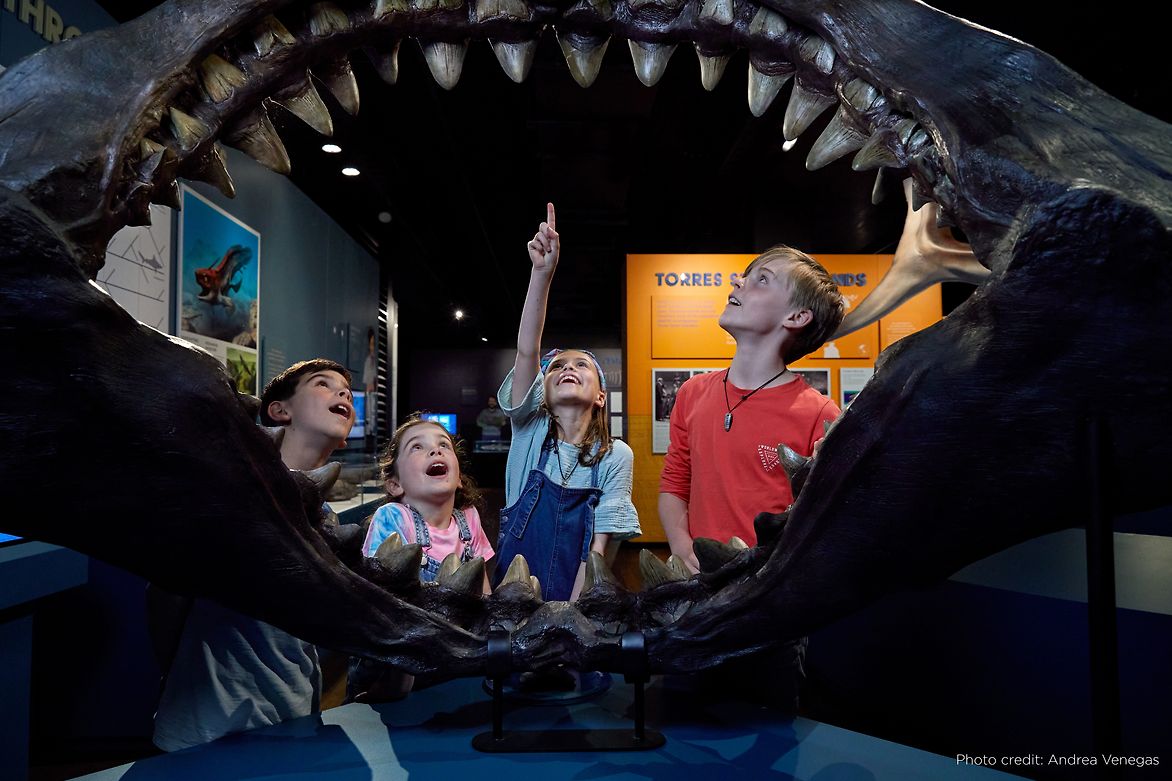
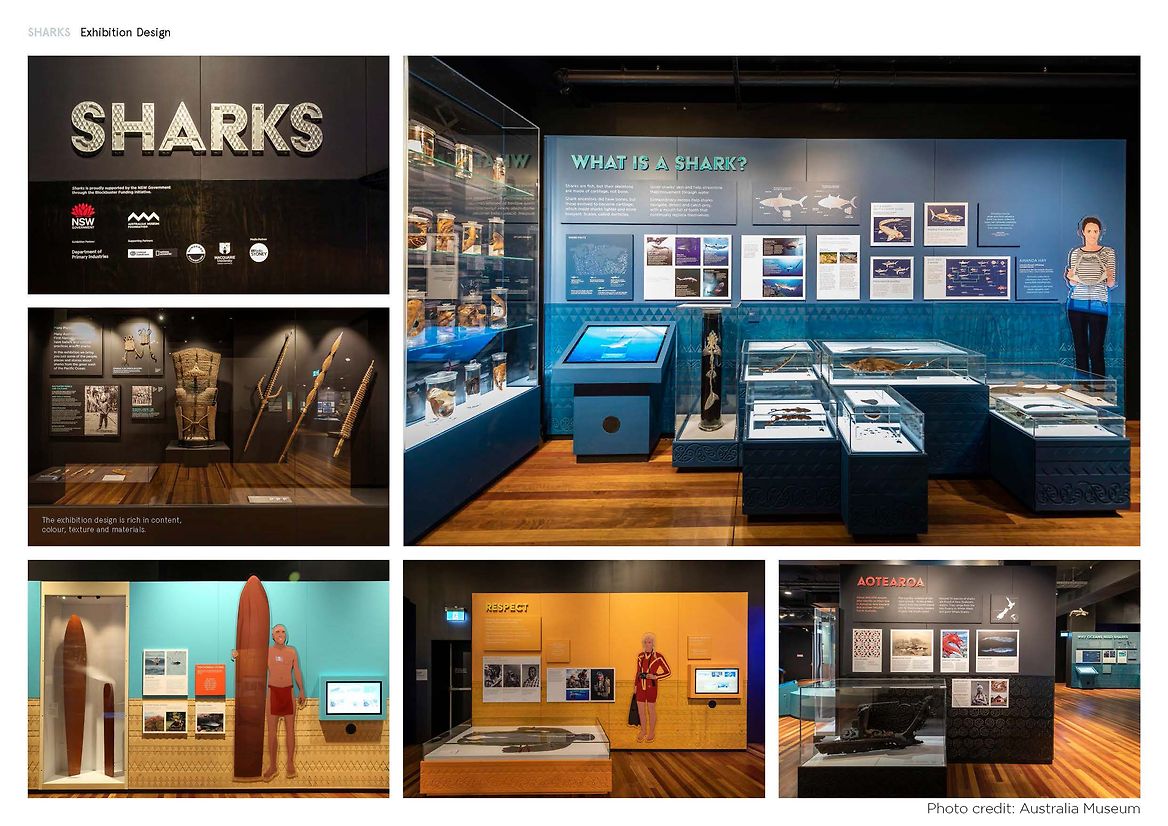
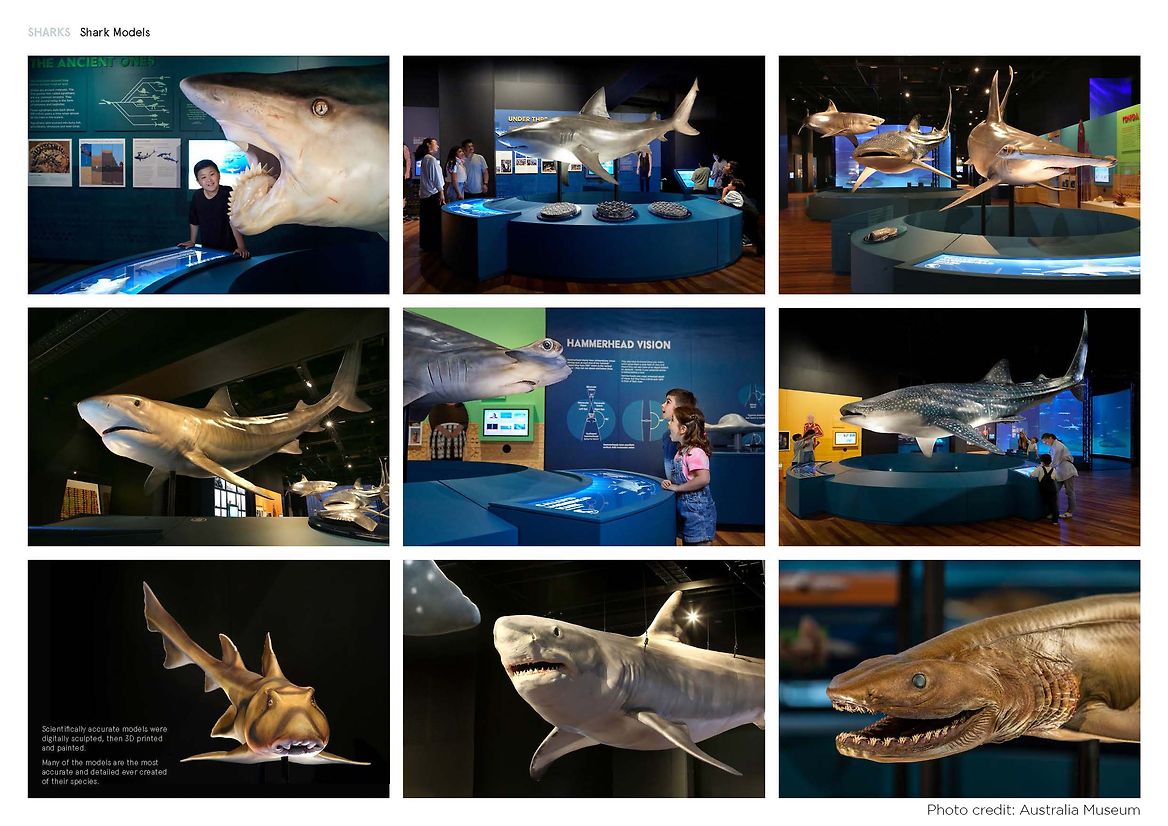
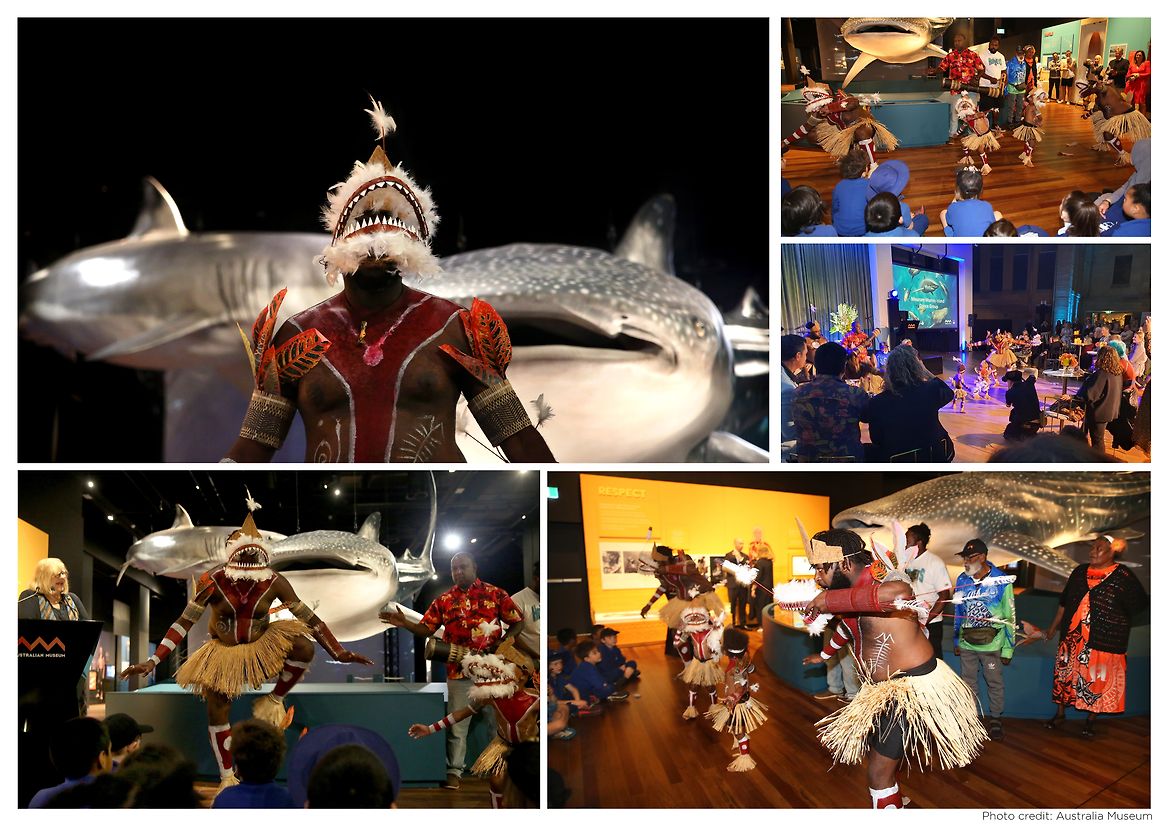
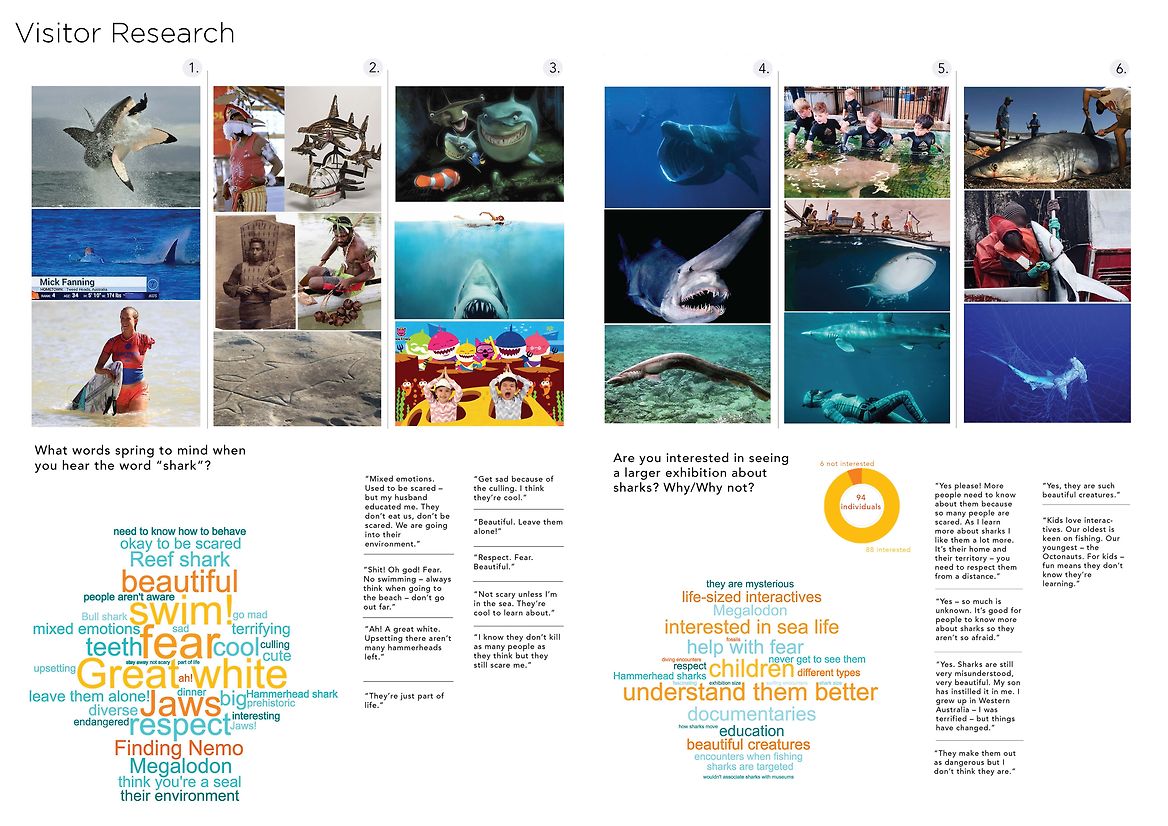
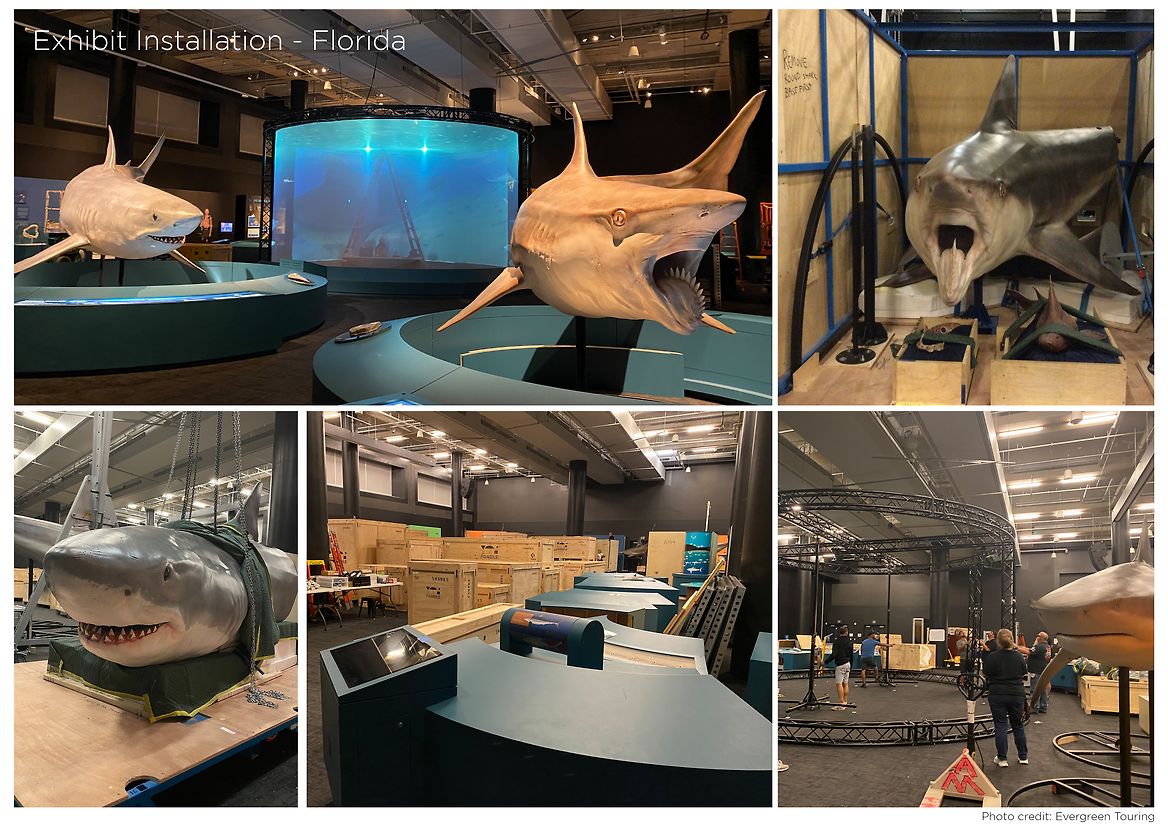
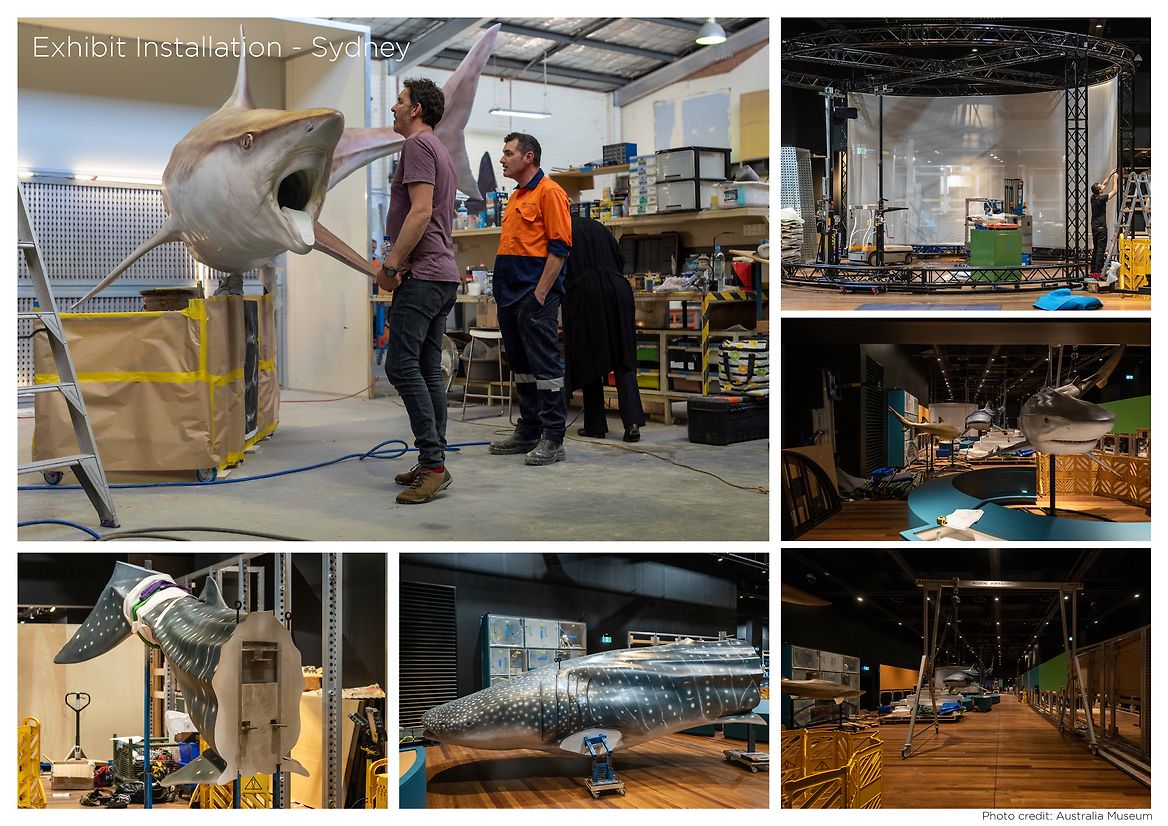
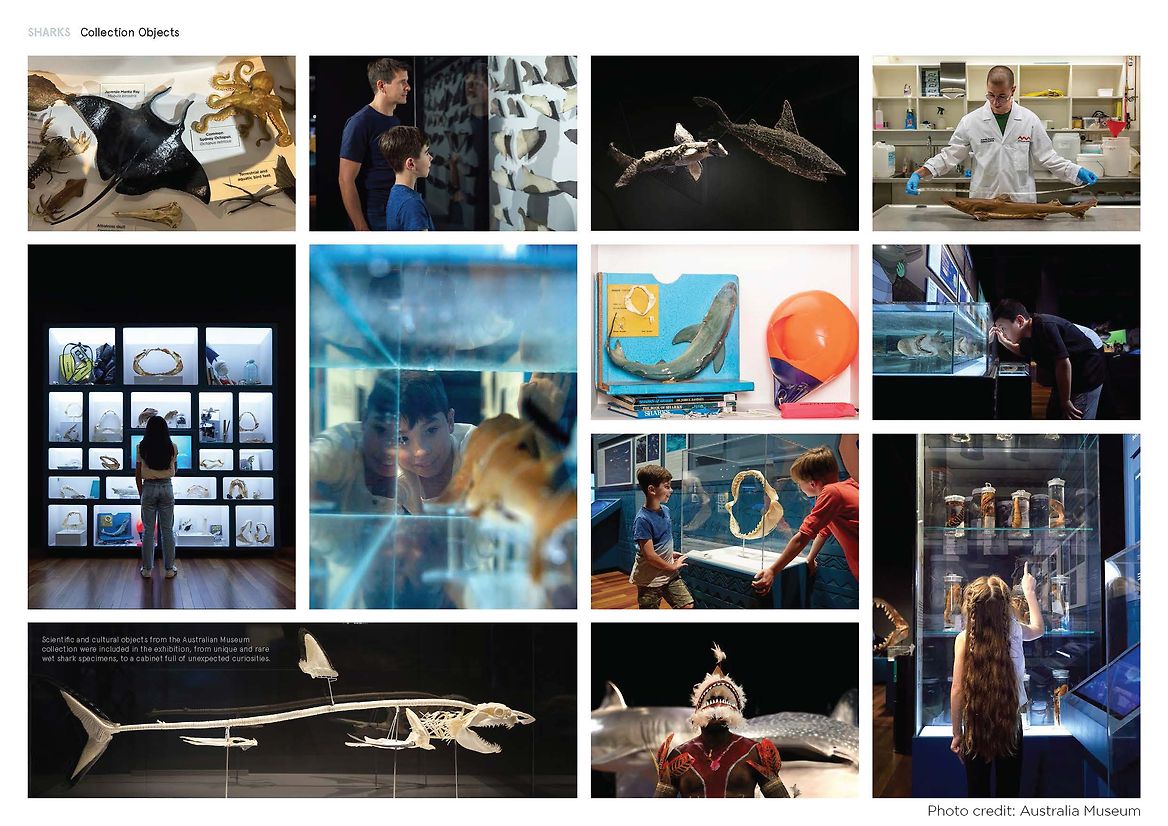
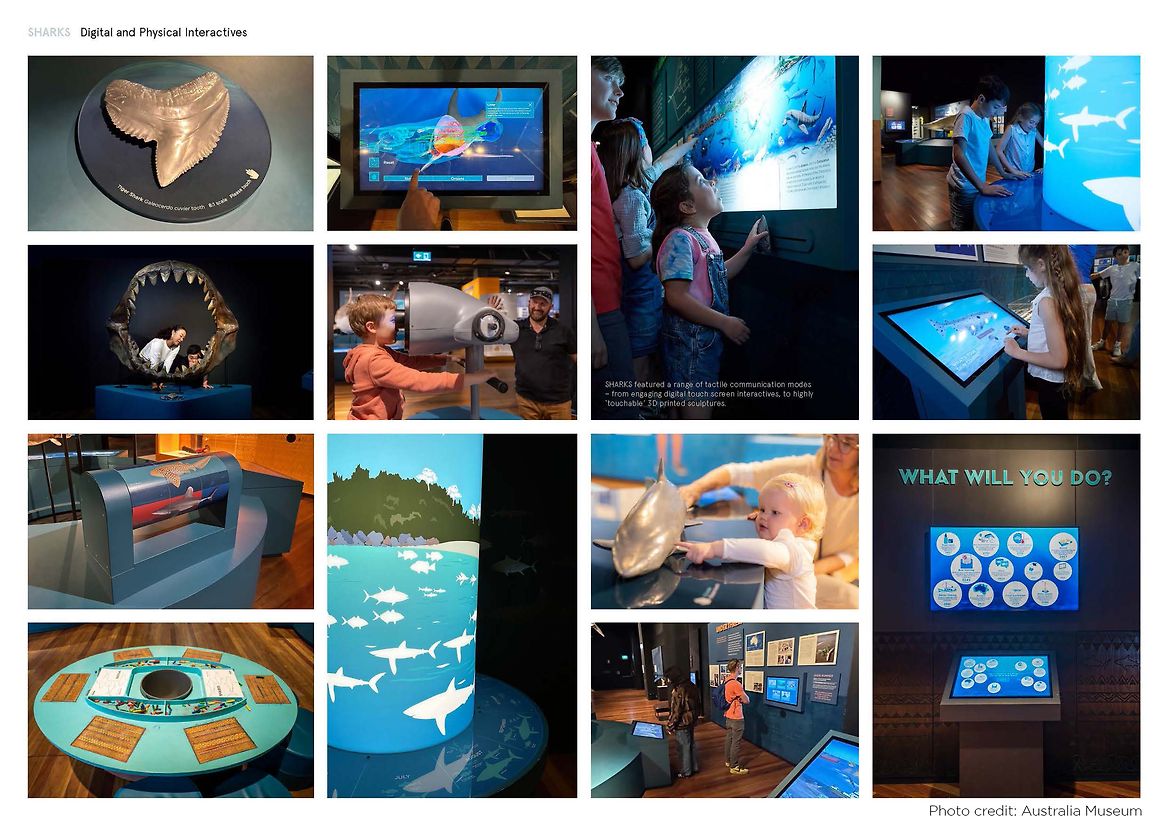
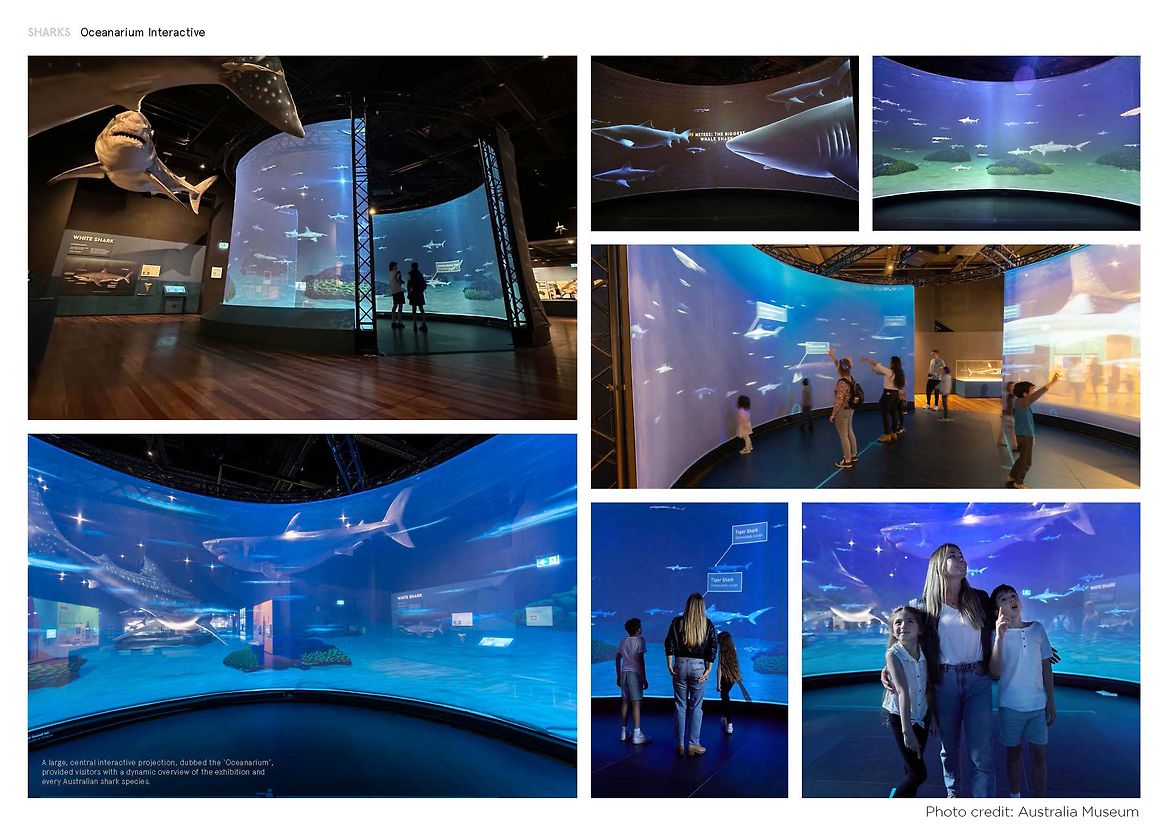
Description:
Sharks is a blockbuster exhibition created for the Australian Museum in Sydney, which is now touring internationally - most recently in Florida, where it was visited by 300,000 people.
Australia is famous for its sharks, and has by far the greatest range of shark biodiversity of any country in the world. But the exhibition is not just about sharks themselves, it’s also about people and sharks. In particular, the attitudes held by different indigenous people of Australia and the Pacific - who view sharks differently. In many Pacific and Australian First Nations cultures, sharks are revered - often seen as ancestors, or even gods. Among some groups, sharks are never taken; in others, only under strict protocols.
It’s also about what the world can learn from these respectful relationships - crucial in an era in which it is estimated that a stunning 100 million sharks are killed by humans every year, and many species of these incredible survivors are now critically endangered.
The exhibition also highlights the latest scientific knowledge about sharks past and present from the museum’s own ichthyologists and palaeontologists, and a range of other experts from around Australia, New Zealand and the Pacific.
By bringing First Nations and science knowledge together the exhibition plays to the strengths of the museum, which has one of the world’s greatest collections of Pacific and Australian cultural artefacts, and extraordinary depth in its natural history collection.
Where possible we included touchable interactive elements, and created a very large scale “aquarium-style” projection interactive through which swims every one of the 180 species of shark found in Australian waters - from the tiny but fierce cookie-cutter to the majestic whale shark.
We also supervised an international film shoot to collect interviews, dances, and other material, supplementing it with a huge amount of stock footage from around the world - all presented in bite-sized video chunks.
The result was an extremely successful show that became the talk of the town - particularly when “Progress Shark” the large shark model outside the exhibition was skinned in rainbow colours to express solidarity with the city’s LGBTQ communities and became an unofficial icon of Pride Week.